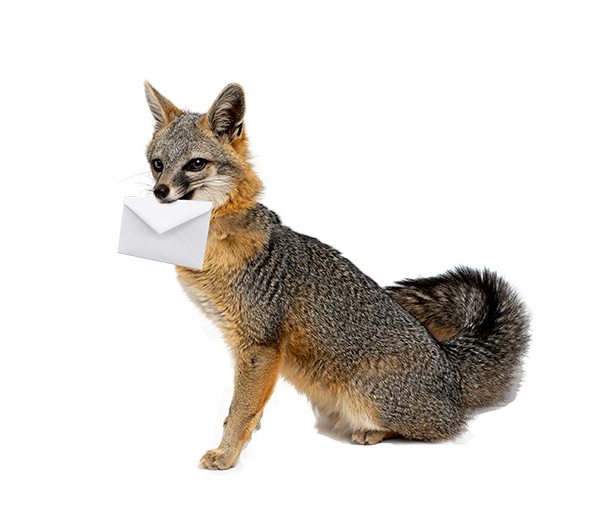Dinos in the Desert
Roar No More: Sensory Friendly Dino Days
March 30 & 31 | April 20 & 21
Roar No More: Sensory-Friendly Dino Days will take place in March and April for a total of four special days when our animatronic dinosaurs will be silenced, but continue to move. These days are designed for guests who experience sensory sensitivities or may find the dino roaring sounds overwhelming. If you love the dinosaurs but miss the peace and tranquility our grounds offer, then mark your calendars! We want everyone to feel welcome and comfortable while enjoying Dinos in the Desert in a way that works best for them.
At the Museum from mid-December, 2024 until April 27, 2025
Dinosaurs have arrived at the Desert Museum! Dinos in the Desert is our newest temporary exhibit that offers the thrill of seeing these amazing creatures brought to life throughout our grounds. This is a unique opportunity for the whole family to explore, learn, and immerse yourselves in a world where dinosaurs roam. Join us for a journey back in time! This is a unique opportunity for the whole family to explore, learn, and immerse yourselves in a world where dinosaurs roam. Join us for a journey back in time!
Included with Museum admission. This prehistoric exhibit is spread throughout our grounds. What will you discover as you explore?
Deinonychus
(Die-NON-e-cuss) Until recently, scientists thought that dinosaurs were slow and sluggish, but clues left in Deinonychus fossils showed that many dinosaurs were active and agile. Dinosaurs like Deinonychus are the ancestors of modern birds! Deinonychus is named for the “terrible claw” on each hind leg. |
Kosmoceratops
(KOZ-mow-SERR-a-tops) Kosmoceratops had the fanciest head decorations of any dinosaur, with 15 horns and an elaborate frill around the neck. Perhaps these helped them to attract mates, or scare off the competition. Scientists still aren’t sure what Kosmoceratops did with such a showy head. |
Maiasaura
(MY-ah-SORE-ah) Maiasaura means “good mother dinosaur”. This duckbilled dinosaur earned its name because it was found with nests of eggs and youngsters. Maiasaura hatchlings grew very fast — up to 5 feet in one year! They were social animals and lived in large herds. |
Pachycephalosaurus
(PACK-ee-SEFF-a-low-sore-us) Pachycephalosaurus was the largest of the dome-headed dinosaurs. Its forehead was as thick as a bowling ball. Scientists study the fossilized domes and compare them to modern animals to figure out what they were used for. They may have used their heads to butt each other, like bighorn sheep. |
Parasaurolophus
(PAIR-ah-sore-oll-OH-fuss) What do you notice first about the Parasaurolophus? That unusual crest on its head was made up of bones with tubes. At first, scientists thought it might have been used like a snorkel, but now they think that it was used to make sounds, or show-off, or even cool-off. There’s still so much we don’t know about dinosaurs! |
Pterosaur
(TE-ro-sore) Pterosaurs (commonly known as pterodactyls) were winged reptiles. There were hundreds of different pterosaur species who could fly, glide, and also fold their wings to walk on four limbs. Pterosaurs were not dinosaurs, but they lived among them and ruled the skies for most of Mesozoic. |
Quetzalcoatlus
(ket-zel-KWAT-a-lus) Quetzalcoatlus was the largest animal that ever flew (as far as we know)! Its wingspan was as wide as a fighter jet. Like many other pterosaurs it was lightly built, with a thin body, a long, pointed jaw, and sharp small teeth to catch its favored prey - fish. Engineers copied its body plan to design experimental aircraft. It is named for Quetzalcoatl — the feathered serpent god of the Aztec civilization. |
Triceratops
(TRI-serr-oh-tops) Triceratops is named for its three long horns. Though the horns look scary, they were weak and not a good defense against T. rex. So, what did Triceratops use their horns for? Maybe they used them to attract or compete for mates but we still don’t know. |
Tyrannosaurus rex
(Tuh-ran-oh-SORE-us rex) T. rex was one of the largest land-based carnivores of all time, and was the top predator in the ecosystem where it lived. Its massive skull contained 50 sharp teeth the size of bananas! We still don’t know for sure why this powerful animal had such small arms. That’s a mystery for future scientists to solve! |
Utahraptor
(YOU-tah-RAP-tore) Utahraptor is one of the largest and the earliest of the raptor dinosaurs. Although we haven’t yet found evidence of Utahraptor feathers, scientists believe that all the raptor-type dinosaurs had them. Most feathers were too delicate to leave any trace in the fossil record. The “velociraptors” in Jurassic Park should have been called Utahraptors, as the real Velociraptors were much smaller than their movie versions! |











